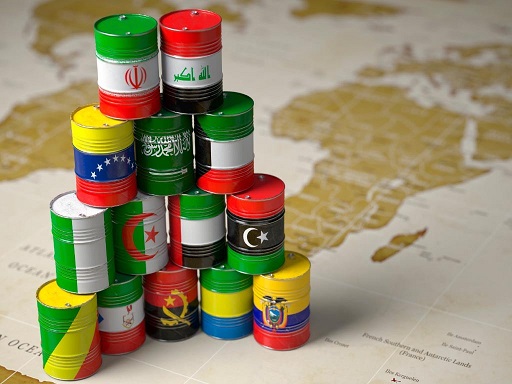Oil exporters in the Middle East and North Africa region are expected to suffer a $270 billion slump in oil revenues this year, according to the latest projections from the International Monetary Fund.
In a regional overview published today, the Washington D.C.-based organization pointed to a sharper-than-anticipated drop in crude production this year for these countries – a group which ranges from Algeria in the west to Iran in the east and also includes the six Gulf Cooperation Council countries as well as Iraq, Libya and Yemen.
Demand for oil has fallen sharply this year as a consequence of the global economic slowdown caused by the coronavirus pandemic. In an effort to shore up prices, the oil cartel Opec and other allied producers such as Russia have agreed production cuts which have further reduced their income.
Middle East countries are suffering from a healthcare crisis too of course and the IMF says the “double whammy” of weaker oil prices (alongside supply cuts) and the economic lockdowns imposed in response to the pandemic mean the region’s oil exporters are projected to suffer a 7.3% contraction in their gross domestic product (GDP) this year.
That marks a sharp downward revision from the figures in the IMF’s last Regional Economic Outlook report, issued in April, when it was predicting a contraction of 4.2%.
“Non-oil GDP in these economies has also been marked down as stay-at-home rules and other Covid-19 containment measures are causing larger-than-expected disruptions to the tourism, hospitality, transportation, and retail sectors,” the IMF said in its latest report.
Underlining the extent of the crisis facing the region, the organization has also pared back its forecast for the economic rebound it expects to see next year to 3.9% (down from the 4.7% it had penciled in back in April).
Conflict and crisis
Many oil exporters at least have the comfort of large savings they can fall back on to help deal with the crisis. Some others in the region are less fortunate and those living in fragile and conflict-affected states such as Afghanistan, Iraq, Syria, Sudan and Yemen are facing an even bleaker short-term outlook.
The global crisis has led to trade levels shrinking, supply chains being disrupted and a collapse in receipts from tourism and remittances. The latter accounts for around 14% of total GDP in the region’s weakest states.
As a result of all these debilitating trends, the IMF says economic output in these countries is projected to shrunk by 13% on average this year and there is likely to be a sharp decline in GDP per capita, from $2,900 in 2018/19 to just $2,000 this year.
“This is a dramatic downturn that will aggravate existing economic and humanitarian challenges and raise already-high poverty levels,” the IMF warned.
One group of countries is, in one respect at least, relatively well placed to benefit from some of the trends at play this year. Oil importers – a group which includes the likes of Egypt, Jordan, Lebanon, Morocco and Tunisia – can benefit from lower fuel costs. However, that gain is being more than offset by lower trade, tourism and remittances which, combined with other factors such as their own lockdowns, means they are projected to suffer an average fall in GDP of 1.1% this year.
Overall, growth across the MENA, Afghanistan and Pakistan region is now projected at -4.7% for this year, some 2 percentage points lower than the IMF was predicting in April.
Dominic Dudley is a freelance journalist with almost two decades’ experience in reporting on business, economic and political stories in the Middle East, Africa, Asia and Europe.
Source: Forbes, July 13,2020








Comment here